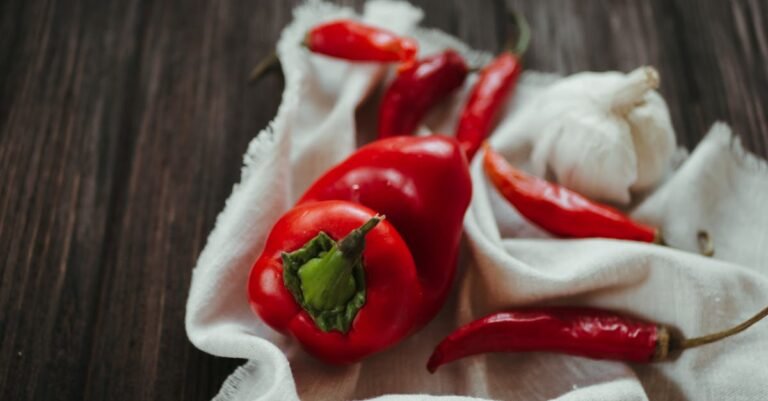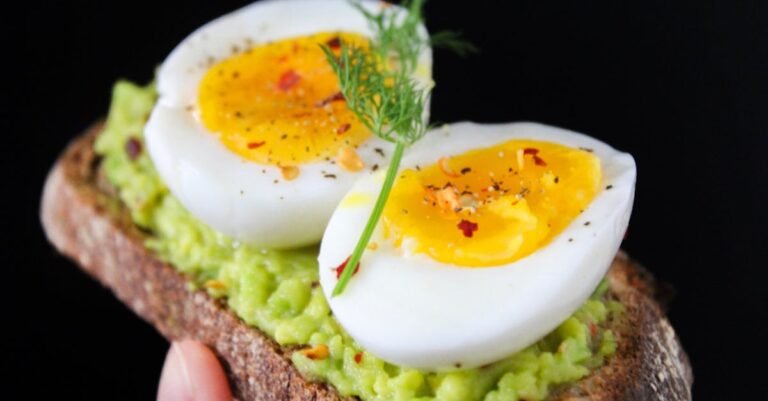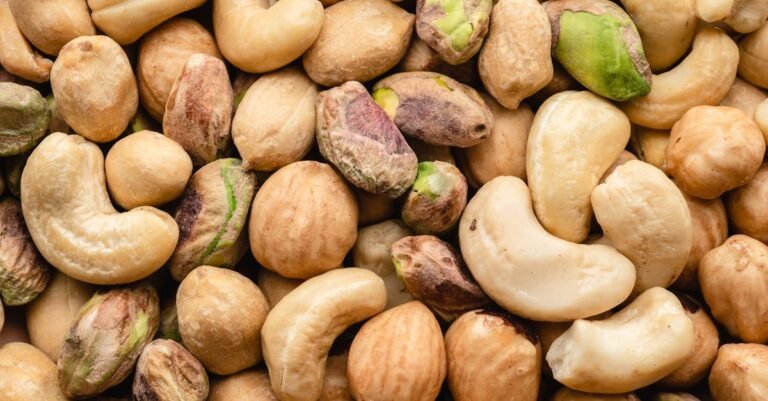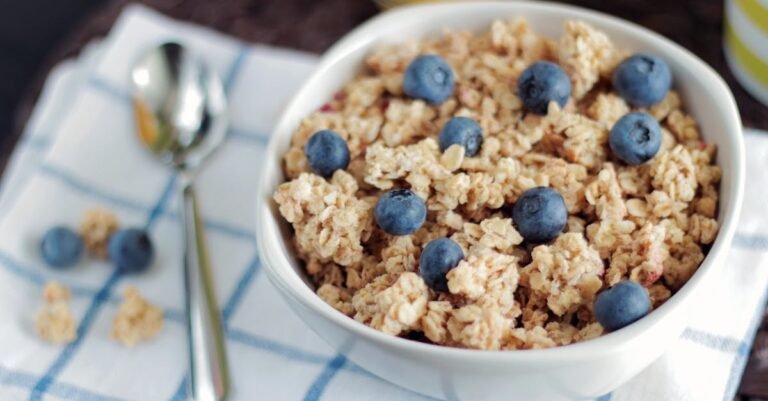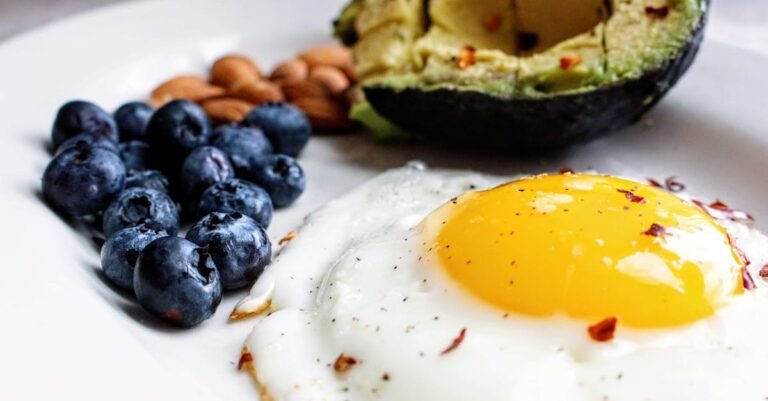- Best Fiber Rich Foods For Digestive Health: Your Gut’s Best Friends!
- Why is Fiber So Darn Important for Digestion Anyway?
- Top Fiber Powerhouses to Add to Your Plate
- Simple Tips to Effortlessly Boost Your Fiber Intake
- A Word of Caution: Increasing Fiber Gradually
- Conclusion: Your Gut Will Thank You!
- Frequently Asked Questions (FAQs)
Best Fiber Rich Foods For Digestive Health: Your Gut’s Best Friends!
Let’s talk about something maybe not *glamorous*, but oh so crucial: fiber! We hear about it all the time, right? Eat more fiber! It’s good for you! But why? Especially when it comes to keeping our digestive system happy and humming along smoothly. If your gut sometimes feels like a grumpy toddler – unpredictable, prone to tantrums (hello, bloating and discomfort!), and generally making life difficult – then paying attention to fiber might just be the secret parenting trick you need. Think of fiber as the unsung hero of your digestive tract, the loyal sidekick working tirelessly behind the scenes. Getting enough of the *right* kinds of fiber from delicious, whole foods can make a world of difference. Ready to dive into the wonderful world of fiber rich foods and give your digestion the boost it deserves? Let’s get started!
Why is Fiber So Darn Important for Digestion Anyway?
Okay, so we know fiber is good, but *what* exactly does it do down there in the labyrinth of our intestines? It’s not just about avoiding constipation, although that’s definitely a major perk! Fiber is essentially the part of plant based foods that our body can’t digest or absorb. Sounds useless, right? Far from it! Instead of being broken down, fiber travels relatively intact through your stomach, small intestine, and colon, and then… well, you know. Along this journey, it plays several critical roles that are fundamental to good digestive health and even overall well being.
Think of it like this: your digestive system needs things to *work* with. Fiber provides the bulk and the texture needed to keep things moving efficiently. Without it, things can get sluggish, leading to discomfort, irregularity, and a general feeling of ‘ugh’. It’s the internal broom, sweeping things along and keeping the pipes clear. But its job is much more sophisticated than just being a bulking agent.
The Dynamic Duo: Soluble vs. Insoluble Fiber
Now, here’s where it gets interesting. Fiber isn’t just one single thing. It comes in two main forms, and they both have distinct, yet equally important, jobs in your gut. Understanding the difference helps you appreciate why a varied diet rich in different plant foods is key.
Soluble Fiber: The Gel Maker
This type of fiber dissolves in water, forming a gel like substance in your digestive tract. Imagine it like a sponge soaking up water. This gel does a few amazing things:
- Slows Digestion: By forming this gel, soluble fiber slows down how quickly food empties from your stomach and how quickly sugar is absorbed into your bloodstream. This helps you feel fuller for longer (great for weight management!) and prevents those sharp blood sugar spikes and crashes.
- Feeds Good Bacteria: Many types of soluble fiber are *prebiotics*. This means they act as food for the beneficial bacteria living in your gut (your microbiome). Keeping these little guys happy is crucial for digestion, immunity, and even mental health!
- Lowers Cholesterol: This gel can bind to cholesterol particles in your digestive system and help escort them out of the body, which can contribute to lower LDL (“bad”) cholesterol levels.
You’ll find soluble fiber in foods like oats, barley, nuts, seeds, beans, lentils, peas, and some fruits and vegetables like apples, citrus fruits, and carrots.
Insoluble Fiber: The “Roughage” Hero
This is the type people often think of as “roughage.” As the name suggests, insoluble fiber does *not* dissolve in water. Instead, it adds bulk to your stool and helps it move more quickly through your intestines. Think of it as the aforementioned broom, effectively sweeping waste out.
- Promotes Regularity: This is its star role! By adding bulk and speeding up transit time, insoluble fiber helps prevent constipation and maintain regular bowel movements.
- Supports Gut Health: By keeping things moving, it helps maintain a healthy environment in your colon.
Good sources of insoluble fiber include whole wheat flour, wheat bran, nuts, beans, and vegetables like cauliflower, green beans, and potatoes (especially the skins!).
Most plant based foods actually contain a mix of both soluble and insoluble fiber, which is great because you need both for optimal digestive health! They work together like a well coordinated team.
Beyond Regularity: Other Digestive Perks of Fiber
While keeping you regular is a major benefit, fiber’s role in digestion goes deeper. As mentioned, soluble fiber acts as a prebiotic, nourishing your gut microbiome. Why is this so important? A healthy, diverse gut microbiome is linked to:
- Improved digestion and nutrient absorption.
- A stronger immune system (a large portion of your immune system resides in your gut!).
- Reduced inflammation throughout the body.
- Better mood and mental health (the gut brain axis is real!).
- Protection against certain digestive disorders.
By feeding these beneficial microbes, fiber essentially helps cultivate a thriving internal garden that supports your overall health from the inside out. It also helps maintain the integrity of your gut lining, preventing unwanted substances from “leaking” into your bloodstream. So, eating fiber isn’t just about bowel movements; it’s about fostering a healthy internal ecosystem.
Top Fiber Powerhouses to Add to Your Plate
Alright, enough theory! Let’s get practical. Where can you find these amazing fibers? The good news is, they’re hiding in plain sight in lots of delicious, everyday foods. Boosting your fiber intake doesn’t mean choking down bland bran flakes (unless you like them!). It’s about incorporating a variety of plant based goodies into your meals and snacks.
Legumes: Beans, Lentils, and Peas, Oh My!
Legumes are absolute rockstars when it comes to fiber content, offering a fantastic mix of both soluble and insoluble types. Plus, they’re packed with protein and other essential nutrients. Think black beans, kidney beans, chickpeas, lentils, split peas, edamame… the list goes on! They are incredibly versatile – add them to soups, stews, salads, tacos, curries, or even blend them into dips like hummus. Worried about gas? Start with smaller portions and gradually increase your intake. Rinsing canned beans well can also help.
Spotlight on: Lentils
Lentils are particularly amazing. They cook relatively quickly compared to dried beans (no soaking required for most types!), making them a convenient weeknight option. Just one cooked cup packs around 16 grams of fiber! They come in various colors – brown, green, red, black – each with a slightly different texture and flavor profile. Red lentils cook down quickly and are great for thickening soups and stews, while green and brown lentils hold their shape better and work well in salads or as a side dish.
Spotlight on: Chickpeas
Also known as garbanzo beans, chickpeas are another fiber hero, providing about 12 grams per cooked cup. They have a lovely nutty flavor and creamy texture. We all know and love hummus, but chickpeas are also fantastic roasted until crispy for a healthy snack, tossed into salads for extra substance, or simmered in curries and stews. They’re a true pantry staple!
Whole Grains: Not Just Brown Bread
Forget refined white bread and pasta – whole grains are where it’s at for fiber! When a grain is “whole,” it means it contains all three parts of the grain kernel: the bran (fiber rich outer layer), the germ (nutrient packed core), and the endosperm (starchy part). Refined grains typically have the bran and germ removed, stripping away most of the fiber and nutrients. Look for “100% whole wheat” or “whole grain” as the first ingredient on labels. Think oats, quinoa, brown rice, barley, bulgur, farro, and whole wheat bread and pasta.
Oats: The Breakfast Champion
Oats are famous for their high content of a specific type of soluble fiber called beta glucan, which is particularly effective at lowering cholesterol and stabilizing blood sugar. A bowl of oatmeal (made from rolled oats or steel cut oats, not the instant sugary kind!) is a fantastic way to start your day with a solid fiber boost (around 4-5 grams per serving). You can also add oats to smoothies, bake them into muffins or cookies, or make overnight oats for a quick grab and go breakfast.
Quinoa: The Complete Protein Grain
Technically a seed but often used like a grain, quinoa is a nutritional powerhouse. It’s one of the few plant foods that contains all nine essential amino acids, making it a complete protein. It also boasts a good amount of fiber, around 5 grams per cooked cup. Quinoa has a slightly nutty flavor and cooks up fluffy in about 15 minutes. Use it as a base for bowls, in salads, as a side dish instead of rice, or even in veggie burgers.
Fruits: Nature’s Sweet Fiber Source
Fruits are not just delicious and packed with vitamins; many are also excellent sources of fiber, especially soluble fiber. Aim for variety and eat the skins whenever possible, as that’s where a lot of the fiber (and nutrients) reside!
Berries: Tiny but Mighty
Raspberries and blackberries are fiber champions, packing around 8 grams per cup! Strawberries and blueberries are also great choices. Berries are loaded with antioxidants too. Enjoy them fresh as a snack, blended into smoothies, sprinkled on yogurt or oatmeal, or added to salads for a burst of sweetness and color.
Pears & Apples: Skin On, Please!
A medium pear with the skin offers about 6 grams of fiber, while a medium apple with skin provides around 4.5 grams. Much of this fiber is pectin, a type of soluble fiber. Remember to eat the skin (after washing it well, of course!) to get the maximum benefit. They make perfect portable snacks or can be sliced into salads or baked into desserts.
Vegetables: The Unsung Heroes
We all know we should eat our veggies, and their fiber content is a big reason why! Aim to fill half your plate with vegetables at lunch and dinner. All vegetables contain fiber, but some are particularly noteworthy.
Broccoli & Brussels Sprouts: Cruciferous Crunch
These cruciferous veggies are fiber stars. One cup of chopped broccoli has about 5 grams of fiber, while a cup of Brussels sprouts offers around 4 grams. They also provide a host of other beneficial compounds. Roasting them brings out their natural sweetness and makes them incredibly tasty. Steaming or sautéing are also great options.
Root Vegetables: Carrots & Sweet Potatoes
Don’t forget about the veggies that grow underground! Carrots are a good source of fiber (around 3.5 grams per cup, chopped), especially soluble fiber. Sweet potatoes (with skin) are another fantastic choice, offering about 4 grams of fiber per medium potato, along with beta carotene. Roast them, mash them, add them to stews – they’re delicious and versatile.
Nuts & Seeds: Small Packages, Big Fiber Punch
Nuts and seeds are nutrient dense powerhouses, providing healthy fats, protein, and, yes, significant amounts of fiber. They make great snacks and additions to meals.
Chia Seeds & Flaxseeds: Omega 3 & Fiber Stars
These tiny seeds are incredibly rich in fiber, particularly soluble fiber, which forms that characteristic gel when mixed with liquid (think chia pudding!). Just two tablespoons of chia seeds pack a whopping 10 grams of fiber, while two tablespoons of ground flaxseed provide about 4 grams. They are also excellent sources of plant based omega 3 fatty acids. Add them to smoothies, yogurt, oatmeal, or use them in baking as an egg replacer.
Other great options include almonds (about 3.5g fiber per ounce), pistachios (3g per ounce), sunflower seeds (3g per ounce), and pumpkin seeds (nearly 2g per ounce). A small handful is usually a good serving size.
Simple Tips to Effortlessly Boost Your Fiber Intake
Okay, that’s a lot of great foods! But how do you actually incorporate *more* fiber into your daily routine without feeling overwhelmed? It’s easier than you think! Small, consistent changes add up.
Start Your Day Strong
Breakfast is a prime opportunity to load up on fiber. Choose whole grain cereal, oatmeal, or whole wheat toast. Top your cereal or yogurt with berries, nuts, or seeds like chia or flax. Add some spinach or kale to your scrambled eggs or smoothie.
Snack Smart
Ditch the processed snacks and reach for fiber rich options. Keep fresh fruit (apples, pears, berries), raw veggies (carrots, bell peppers) with hummus, a small handful of nuts or seeds, or a small whole grain cracker pack handy. Popcorn (air popped or lightly oiled) is also a whole grain and a decent source of fiber!
Make Smart Swaps
This is where you can make a big difference without drastically changing your meals:
- Swap white bread, pasta, and rice for their whole grain counterparts (100% whole wheat bread, whole wheat pasta, brown rice, quinoa).
- Add beans or lentils to your soups, salads, pasta sauces, or mince dishes to bulk them up.
- Leave the skin on potatoes and sweet potatoes.
- Choose whole fruits instead of fruit juice (juice lacks fiber).
- Toss nuts or seeds onto salads, yogurt, or stir fries.
- Incorporate more vegetables into every meal – add spinach to pasta sauce, bulk up sandwiches with lettuce and tomato, have a side salad with dinner.
A Word of Caution: Increasing Fiber Gradually
Now, before you run out and buy *all* the beans and broccoli, a quick heads up! If your current diet is relatively low in fiber, increasing your intake too quickly can lead to some temporary digestive discomfort, like gas, bloating, and cramping. Why? Because your gut bacteria need time to adjust to processing the extra fiber.
The key is to go *slowly*. Add one new high fiber food or make one fiber boosting swap every few days. Give your body time to adapt. Equally important is to drink plenty of water! Fiber, especially soluble fiber, absorbs water. Without enough fluids, fiber can actually contribute to constipation rather than relieving it. Aim for at least 8 glasses (around 2 liters) of water per day, potentially more as you increase your fiber intake. Listen to your body and find the pace that works for you.
Conclusion: Your Gut Will Thank You!
So there you have it – a deep dive into the fantastic world of fiber and its crucial role in keeping your digestive system happy and healthy. It’s not just about avoiding discomfort; it’s about nurturing your gut microbiome, stabilizing blood sugar, managing weight, and supporting your overall well being. By focusing on incorporating a variety of delicious fiber rich foods like legumes, whole grains, fruits, vegetables, nuts, and seeds into your daily meals, you’re making a powerful investment in your health. Remember to increase your intake gradually and drink plenty of water along the way. Your gut works hard for you every single day – isn’t it time you showed it some fibrous love? Go on, make friends with fiber!
Frequently Asked Questions (FAQs)
1. How much fiber do I actually need per day?
General recommendations suggest women aim for about 25 grams per day and men for about 38 grams per day (or slightly less for adults over 50). However, most people fall short of these goals. Focus on gradually increasing your intake from whole food sources rather than fixating on an exact number initially.
2. Can I get enough fiber from supplements instead of food?
While fiber supplements can help bridge the gap, they shouldn’t replace whole food sources. Foods rich in fiber also provide a wide array of vitamins, minerals, antioxidants, and other phytonutrients that supplements lack. Whole foods offer a synergistic effect that supplements can’t replicate. Think of supplements as a potential *addition*, not a replacement.
3. Are all high fiber foods created equal for digestion?
Not necessarily for everyone. While foods like beans, lentils, broccoli, and onions are excellent fiber sources, they also contain certain carbohydrates (like FODMAPs) that can trigger gas, bloating, or discomfort in some individuals, particularly those with Irritable Bowel Syndrome (IBS). If you suspect certain high fiber foods bother you, it might be helpful to work with a healthcare professional or registered dietitian to identify your triggers.
4. Does cooking vegetables reduce their fiber content?
Generally, cooking methods like steaming, boiling, roasting, or sautéing don’t significantly reduce the *amount* of fiber in vegetables. However, very high heat or prolonged cooking might slightly alter the fiber structure (e.g., making soluble fiber more available). The most important thing is to eat plenty of vegetables, cooked or raw, in ways you enjoy!
5. Can eating too much fiber be harmful?
While it’s difficult to “overdose” on fiber from whole foods alone, consuming excessively high amounts (like over 70 grams per day), especially if increased rapidly and without enough water, can lead to negative symptoms like bloating, gas, cramping, constipation, or even nutrient absorption issues in rare cases. Moderation and gradual increases are key. Listen to your body’s signals.


